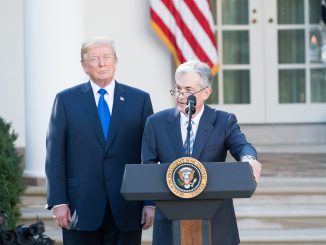Minneapolis Federal Reserve President Narayana Kocherlakota yesterday gave a speech that was something of a shocker. But a little background first. Kocherlakota has generally be viewed as a hawk, more so than his colleague St. Louis Federal Reserve President James Bullard. See, for example, the Credit Suisse mapping of Fed policymakers. I referred to Kocherlakota as one of the “Three Stooges” among the voting members of the 2011 FOMC meetings in regards to his dissents. So it came as something of a surprise yesterday when he said:
The substance of this liftoff plan is that, as long as longer-term inflation expectations remain stable, the Committee will not raise the fed funds rate unless the medium-term outlook for the inflation rate exceeds a threshold value of 2 1/4 percent or the unemployment rate falls below a threshold value of 5.5 percent. Note that neither of these thresholds should be viewed as triggers—that is, once the relevant cutoffs are crossed, the Committee retains the option of either keeping the fed funds rate extraordinarily low or raising the fed funds rate.
At first blush, this sounds like a light version of Chicago Federal Reserve President Charles Evans’ policy approach in which Evans would explicitly allow for an inflation rate as high as 3% as long as unemployment was above 7%. With this sentence, Kocherlakota appears to have decisively moved from the hawkish column to the dovish. Credit Suisse needs to update their charts, and the remaining hawks become even more marginalized.
Mark Thoma, however, argues that there is less here than meets the eye, noting that Kocherlakota shows no willingness to accept that inflation greater than 2% may be helpful. Indeed, Kocherlakota seems focused on the Fed’s 2% target, with the 2.25% simply allowing for some uncertainty of plus or minus 25bp around that target. A true dove, in the classic definition (as I explain here), is a policymaker that seeks relatively higher inflation than his/her colleagues. But by that definition, Evans is the only true dove. The rest of the FOMC worships at the altar of their newly enshrined 2% target. The hawks/doves divide is now about how one views the upside or downside inflation risks to the target rather than the target itself.
A further distinction can be made. Hawks tend to view high upside risks to inflation because they believe structural factors limit the pace of growth. Thus, more monetary policy can only show up in higher inflation. Doves tend to view current challenges as largely cyclical. With the economy operating well below trend, further monetary policy can be applied without stoking inflation.
Now let’s go back to our friend from Minneapolis. Recall that last year, Kocherlakota believed that the Fed funds rate would need to rise in 2011:
These two elements—the increase in core PCE inflation and decline in labor market slack—imply that the target fed funds rate should be raised by at least a percentage point. However, there is a third effect that partially offsets the first two effects. The level of accommodation provided by the Fed’s holdings of long-term securities depends on how long people expect those holdings to last…By putting these three elements together, I arrive at my conclusion: If PCE core inflation rises to 1.5 percent over the course of 2011, the FOMC should raise the fed funds rate by around 50 basis points.
Last year, Kocherlakota was citing 1.5% (core) inflation as a trigger for immediate action; now he sees 2.25% as a threshold that may call for tighter policy. Thus, he exhibits a higher tolerance for inflation, which in and of itself makes him less hawkish in the classic sense than we saw last year.
In addition, last year Kocherlakota argued that monetary policy is incapable of achieving full employment in the near term. In this presentation, he modifies an IS-LM model to define an output level “FEDMAX” that is below the full employment level of output. That Kocherlakota would not have believed that the unemployment rate could be pushed to 5.5%, even in the context of price stability, before the Fed needed to tighten policy. See also Robin Harding on this point.
So by my read, Kocherlakota has definitely come off the hawkish side of the FOMC. He appears to be both more tolerant of inflation and putting less weight on concerns that structural factors could be limiting growth.
Bottom Line: The ranks of Fed hawks grows even thinner, down to just four clear hawks (plus or minus Bullard) out of nineteen policymakers. Barring an “sustainable and substantial” shift in the tone of the data, expect this Fed to keep their foot on the pedal for the foreseeable future.
- Bulenox: Get 45% to 91% OFF ... Use Discount Code: UNO
- Risk Our Money Not Yours | Get 50% to 90% OFF ... Use Discount Code: MMBVBKSM
Disclaimer: This page contains affiliate links. If you choose to make a purchase after clicking a link, we may receive a commission at no additional cost to you. Thank you for your support!




Leave a Reply